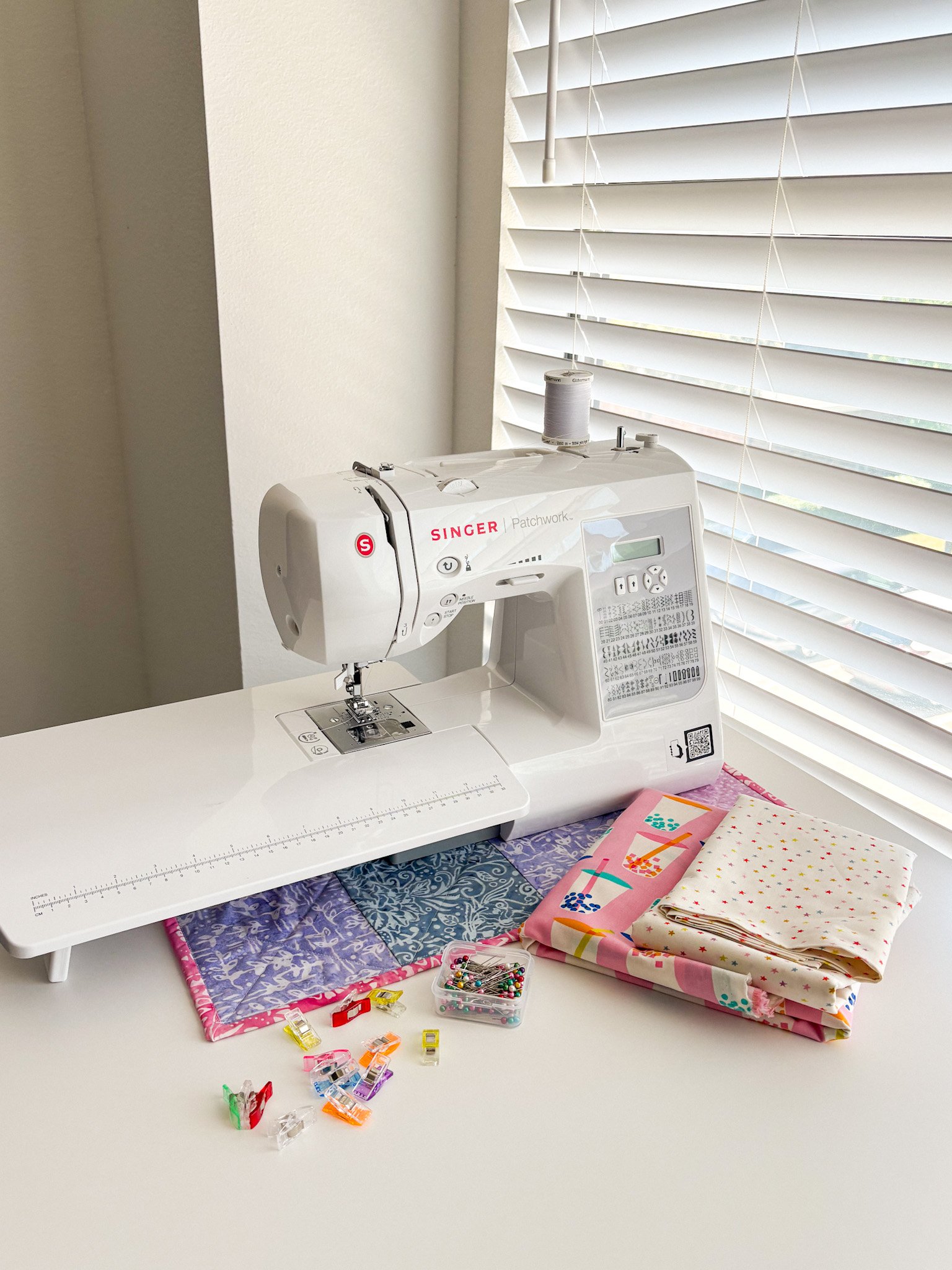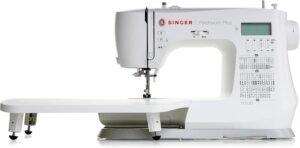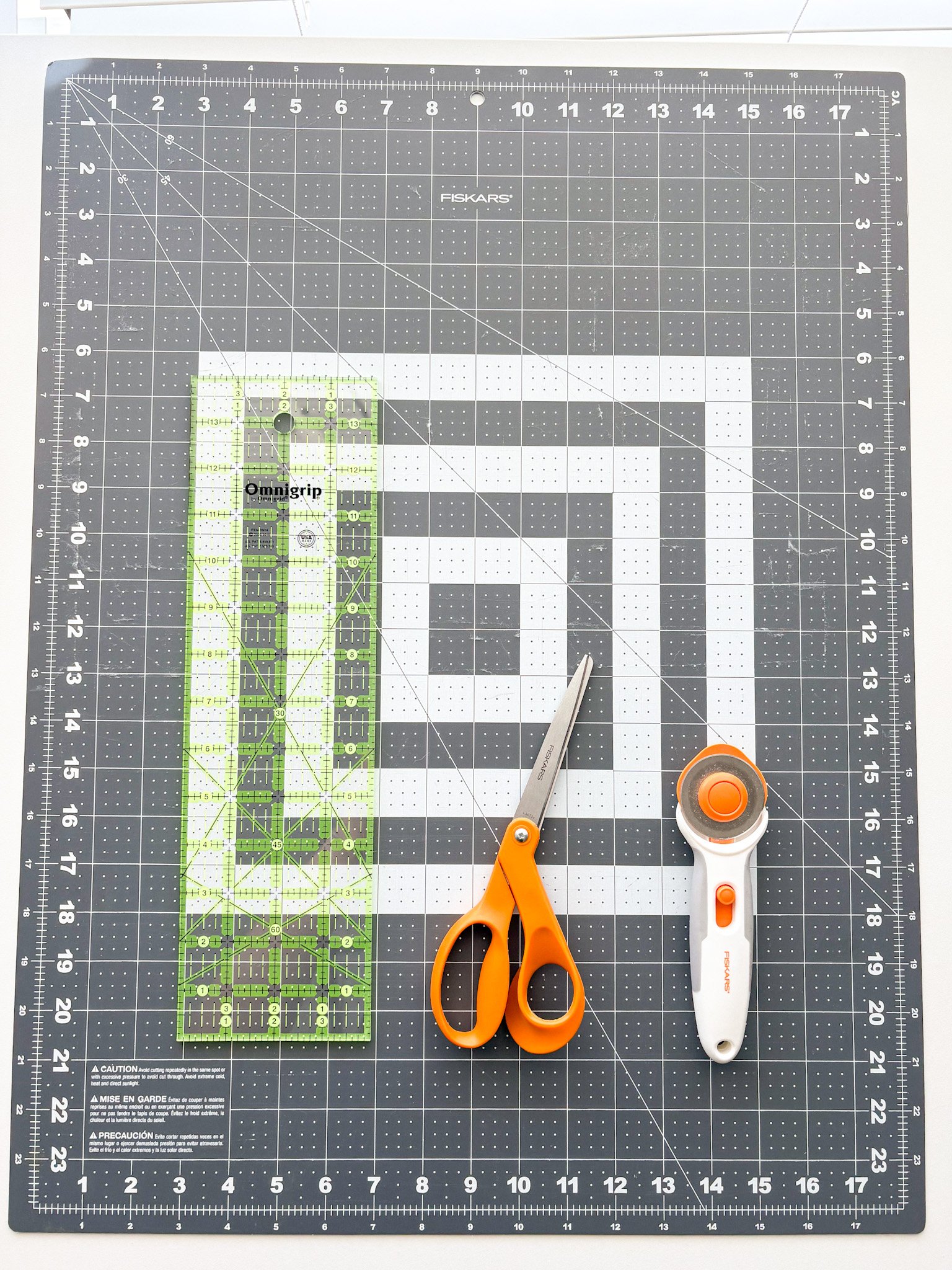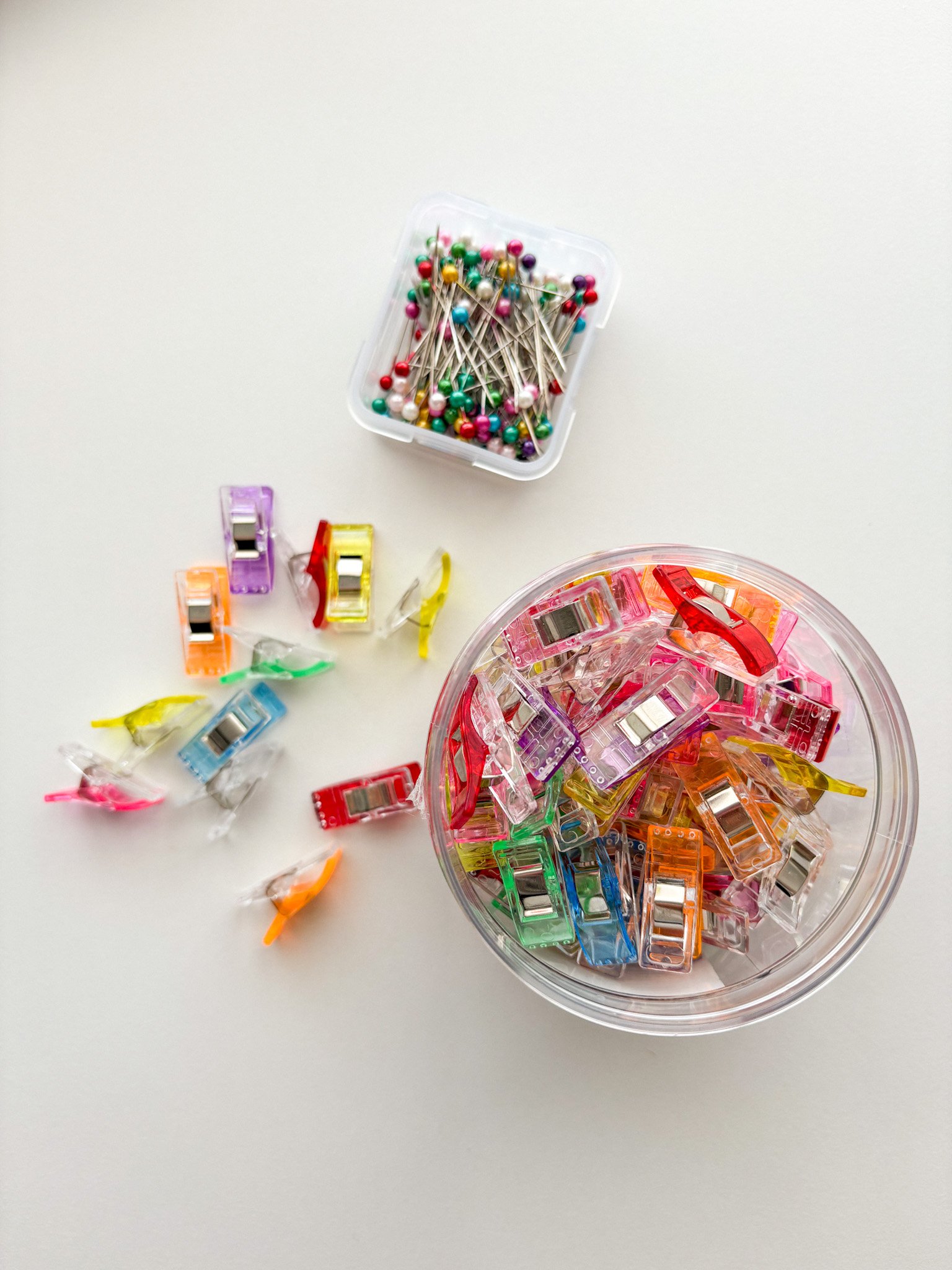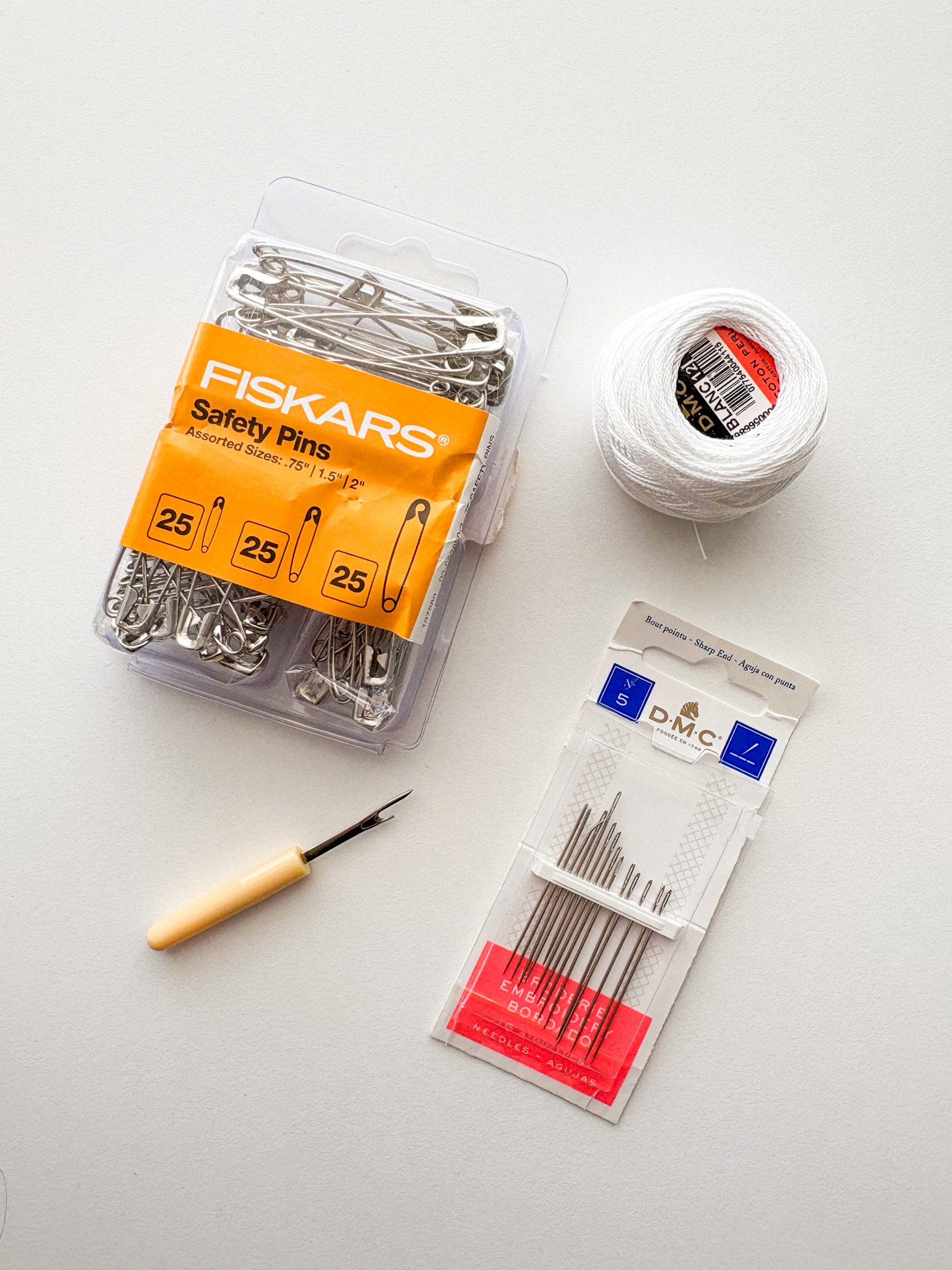Everything You Need to Start Sewing: A Beginner’s Guide
My first introduction to sewing came from watching my grandma. She made all kinds of things, but quilting was her specialty. Helping her sew quickly sparked my interest. I loved the feeling of receiving a handmade quilt as a gift, and I dreamed of creating something just as special to give to others.
When I was young, my grandma gave me my first sewing machine, and my mom signed me up for quilting classes. Every Tuesday, I’d learn the basics: how to sew a straight line, piece together patterns, and stitch a quilt top. I started my first quilt with so much excitement, but like many childhood hobbies, my interest faded before I could finish it. The half-completed quilt and leftover fabric scraps ended up packed away in a box in my parents’ attic.
Decades later, while preparing for a cross-country move, my dad pulled down that same box and my old sewing machine. As I sorted through the scraps, memories came flooding back (and so did the inspiration to finally give sewing another try). With a renewed interest, I asked Danny for a sewing machine for Christmas and started sewing in January of this year!
You don’t need to spend a lot of money or have any prior experience to start sewing. I still consider myself a beginner (it’s been years since I last took a quilting class), and I’m currently teaching myself all over again. But I’m quickly gaining confidence and trying out new projects. If you’re also just getting started, keep reading for a complete guide to everything you need to start sewing.
Essential Tools for Beginner Sewers
Before we dive in, keep in mind that this is not a definitive list. There are so many sewing tools and gadgets out there, and it’s easy to go down the rabbit hole of buying everything at once. But if you’re a beginner, you might just be testing the waters to see if sewing is something you’ll stick with, or you may not want to spend hundreds of dollars right off the bat. I get it!
This guide focuses on the essential tools to get you started without the overwhelm (or the hit to your wallet). As you gain confidence and take on more projects, you can slowly build your collection based on what you actually need and use.
Sewing Machine
The most important thing, unless you plan on exclusively hand sewing, is a sewing machine! There are a lot of different machines and brands out there, and it can feel overwhelming at first. Some of the most popular manufacturers for beginners are Singer, Brother, and Janome. The two main types of machines are mechanical and computerized, and some models also offer added features like embroidery functions.
I highly recommend doing a bit of research before buying, depending on what you plan to sew (clothing, quilts, home décor, etc.). I wanted something I could use for quilting, so I chose the Singer Patchwork. Another popular and more budget-friendly option I often see beginner sewists using is the Singer Heavy Duty.
Scissors and Cutting Tools
Fabric scissors
Trust me, put your kitchen scissors aside and get a dedicated pair of fabric scissors. They are only a few dollars and are designed to cut cleanly through fabric without fraying or snagging. Be sure to use them only for fabric (not paper, plastic, or anything else!) to keep them sharp.
Pinking shears
Pinking shears will cut in a zigzag pattern to help prevent fabric from unraveling, which can be useful for seams. I have also seen them used as a decorative accent. Pinking shears are more important if you will be sewing clothing. If you’re quilting, I think you can get away with just fabric scissors.
Rotary cutter + cutting mat
Especially if you’re planning on quilting or working with a lot of patterns, I recommend getting a rotary cutter and cutting mat! A rotary cutter has a circular knife blade and works by rolling across the fabric to cut it. The rotary cutter makes cutting fabric quicker and more accurate, especially for straight lines.
Measuring Tools
Measuring tape
A measuring tape is very useful if you will be making clothing to help size it, or if you are working with bigger quilting projects. I find that a soft measuring tape is a lot easier to work with (especially if you are measuring yourself for clothing).
Clear quilting ruler
A clear quilting ruler is a must-have if you’re planning to quilt or work with precise fabric measurements. These rulers are usually made of thick, transparent plastic and come with grid lines, angles, and measurements that make it easy to cut straight lines with the rotary cutter. For the ruler, I think it’s better to go bigger than smaller. I made the mistake of getting a smaller ruler and am constantly having to readjust. Get one as long as your cutting mat for easy use. A good size to start with is 6 inches x 24 inches.
Pins and Clips
There are two methods for keeping fabric in place while you are sewing, and I recommend both! Straight pins with ball heads are great for sewing clothing, and if you need to pin inside your fabric. However, the sewing clips are great for thicker fabrics, and clipping along the sides of a fabric to keep the sides in place.
Needles
Usually, your machine will come with needles that are specifically for your sewing machine. They do need to be occasionally replaced due to wear or if they snap. I also recommend getting hand sewing needles, since occasionally you will need to hand stitch. If you plan on using sew-on magnetic clasps or hand-sewn buttons, a curved hand sewing needle is useful as well.
Seam Ripper
Everyone makes mistakes! You are going to want something to help you fix your mistakes (like accidentally sewing the “right side” of the fabric to the “wrong side” of the fabric. A seam ripper is a small tool to help you unstitch the fabric any time you make a mistake or need to adjust a seam.
Thread
To sew, your machine is going to need thread! I recommend the Gutermann 1oo% polyester sew-all thread. You really only need a neutral color, such as white, unless you need the thread to match your project. Avoid cheap threads because they can break or cause your machine to jam. If you’re planning on hand quilting, I also recommend a thicker thread, such as the DMC cotton perle.
Iron and Ironing Board
Another essential for sewing that you may not think about is an iron and an ironing board or mat. Ironing creates a smooth, flat surface for the fabric, which is easier to work with and makes your projects look more polished. If you’re short on space, I recommend an ironing mat instead of an ironing board to save space.
Marking Tools
There are a few different options for marking tools. I use masking tape for quilting to help give me a starting guide, and often need to use pens as well. Fabric chalk, erasable pens, and the hera marker are great options to prevent leaving marks on your projects, especially if the marks you need to make are going to be visible.
Essential Tools to Start Sewing
If you’re a beginner and gathering your supplies to start sewing, be sure to start slow and be patient! It takes time to learn any skill, and sewing is no different. If you are self-teaching, YouTube and Instagram are great resources to learn the basic skills, such as how to thread your machine, change a bobbin, and sew in a straight line. You will also want to learn more about your specific machine, basic seam types, and how to read a pattern. Sewing is a lifelong skill, and everyone makes mistakes, especially when you’re first starting! However, it’s a rewarding skill, and seeing your projects come together is so fulfilling.
I hope this post helped with creating a list for the basic supplies you will need to start sewing as a beginner. If you have any questions, feel free to send me a DM or leave them in the comments below!
As always, you can find me on Instagram @maddie_deer here, or you can follow me on my Facebook page to be alerted to any new posts here. Thanks for reading! 🙂
